Sokoiko! Cycling Tour
Before going to Hiroshima, I had signed up for a cycling tour. The tour was conducted by a local guide who grew up in Hiroshima. We used the "Pisukuru" rental bicycles to get around the city.
Interestingly, this tour is also extremely popular among foreign tourists through TripAdvisor.
On this day, it was a weekday, so I was the only participant in the Japanese tour. Although I could have had a one-on-one tour in Japanese, I decided to join the English tour since I had the opportunity. I was a little nervous!
The other participants were from the UK and New Zealand. Everyone was a native English speaker!
Peace Memorial Park
At the beginning of the tour, after exchanging brief greetings and self-introductions, we first left the park to pass by the front of the former "Shima Hospital," which was the ground zero of the atomic bomb explosion. By physically moving through that area, I could grasp the sense of distance.
From there, we cycled out of the park again to reach the Aioi Bridge, which was a landmark during the atomic bomb attack. From the bridge, we had a view of the Peace Memorial Park.
The monument of Sadako Sasaki, known for folding thousands of origami cranes, was also well-known. The statue was created in memory of Sadako Sasaki, a girl who developed leukemia ten years after the bombing and continued to fold origami cranes in the hope of recovery. The cranes folded by Sadako can be seen in the museum. According to the guide, in her final days, Sadako couldn't move freely and had to use a toothpick to fold the cranes.
Perhaps because it was a weekday, I encountered several groups of elementary school students performing ceremonies where they offered folded cranes while singing prayers and reciting poems. As someone who attended a Catholic school, I had experienced Christian prayers before. When I went to Okinawa for peace education, we prayed at various locations and even had a Mass at the end. However, it was my first time hearing songs and poems praying for peace, and just being present there made me feel united with everyone's emotions.
A-Bomb Cherry Trees Planted by G7 Leaders - Memorial Monument
I thought that the enclosure could have been more elaborate, but I am looking forward to seeing the tree grow and bloom in the future.
From there, we headed to the central area of the park, where the Memorial Monument stands. Many people were gathered in front of the monument, and by looking straight ahead, we could see the Atomic Bomb Dome. During the Peace Memorial Ceremony and other events, this area becomes a stage and is not often shown. However, the guide informed us that there are stones in the water with the words of the monument translated into various languages.
Red Cross Hospital
Next, we passed through the arcade shopping street and made our way to the Red Cross Hospital. Being on a cycling tour allowed us to move around easily.
While being encouraged with phrases like, "Japanese people can navigate crowded places easily, so you can do it too!" I realized that this was actually my first time riding an electric bicycle, and as a Japanese person, I might have struggled a bit with the operation. Along the way, I learned about Hiroshima's city life and daily living from the guide.
We arrived at the Hiroshima Red Cross Hospital, which is preserved as a memorial park called the "Hiroshima Red Cross Atomic Bomb Hospital Memorial Park." I listened to the guide's explanation while looking at the distorted window frames that were actually warped by the bombing. I had the opportunity to hear stories about the people of Hiroshima that are not covered in textbooks, and it made me realize that the events of the atomic bomb are still recent enough that we can hear firsthand accounts from those who experienced it, and the problems caused by the bomb are still ongoing.
While savoring the stories, we also visited the Hiroshima Electric Railway depot and rode our bicycles through the city. The tour ended in the shopping street.
Impressions
Throughout the tour, there were various stories about Hiroshima's history and the events of the atomic bomb. In those stories, the subject was often "My aunt" or "My grandfather," referring to the guide's close relatives.
I believe that these stories shared by a local guide from Hiroshima are valuable.
Personally, I feel a bit regretful that I couldn't hear the experiences directly from the generation that lived through the war, as they were not very open about talking about it. However, I want to internalize the stories I did hear and find a way to pass them on to others.
Additionally, I participated in the English tour this time, and the guide took care to ensure that I understood everything, so I was able to join without any worries. By the way, I realized once again that I am good at listening to English.
While it is possible to visit each location individually, I think it was worthwhile to participate in the tour to learn the stories behind each place, understand the meanings of monuments and fountains, and receive guidance along the way.
Since the guide also supported my study abroad in Malaysia, it further strengthened my determination to do my best!
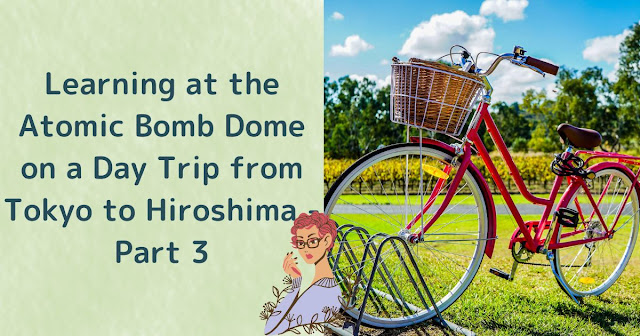
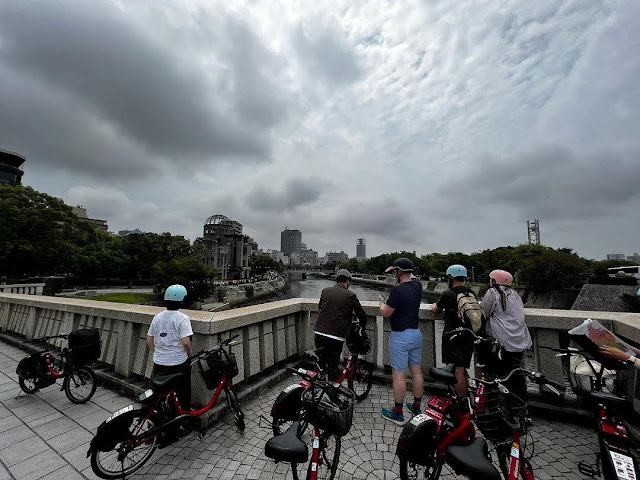
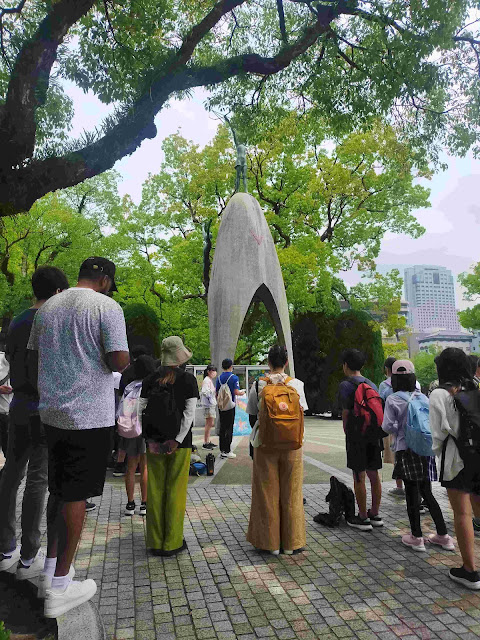
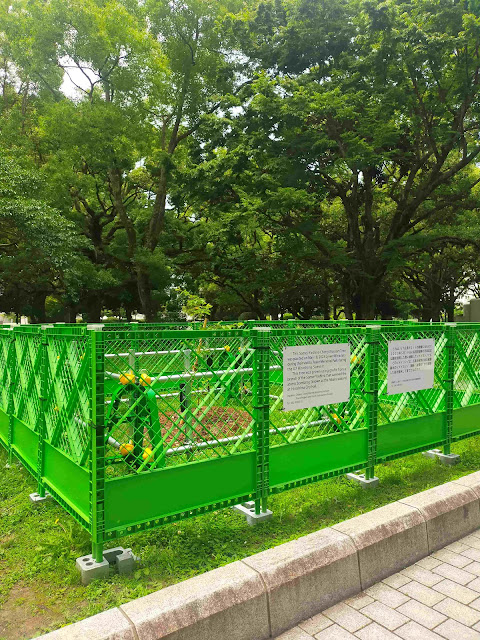
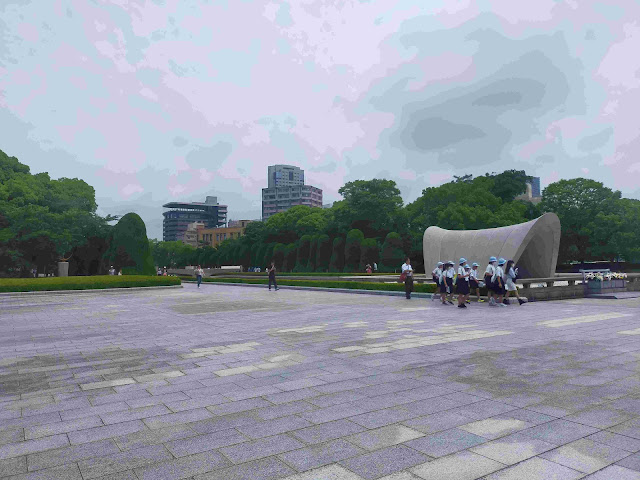
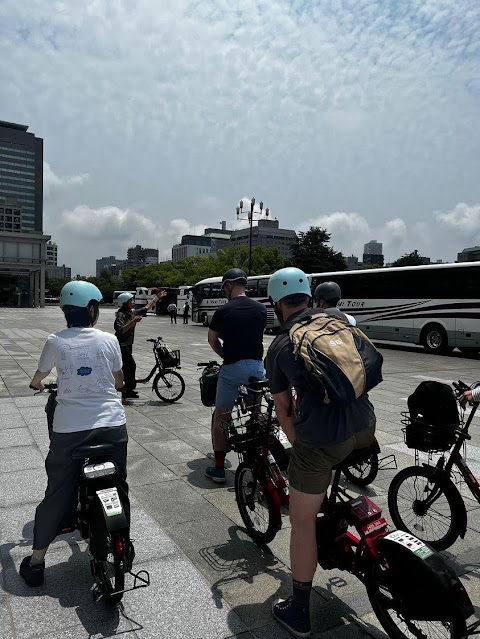
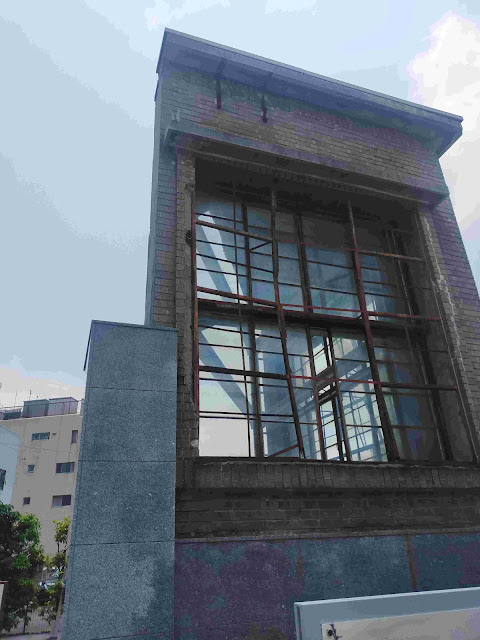


No comments:
Post a Comment